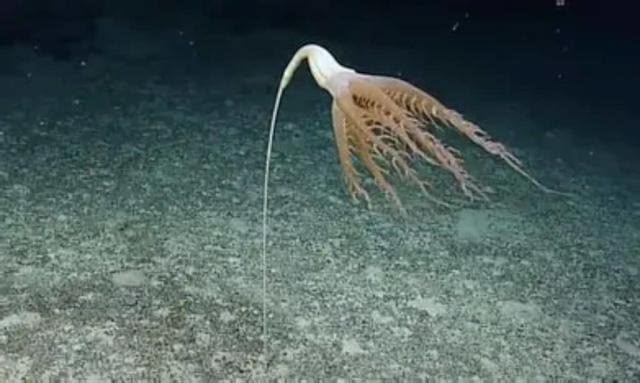DeWayfarer · 61-69, M
So it's anchored to the sea floor with that long extension. Which makes it related to a coral. 👍🏻
AI generated...
AI generated...
🌊 Solumbellula Sea Pen: Feeding and Habitat
🦑 Feeding Habits
The Solumbellula Sea Pen does indeed consume live prey. It primarily feeds on small marine organisms, such as zooplankton and small fish, which it captures using its specialized tentacles. These tentacles are equipped with nematocysts, which are stinging cells that help immobilize prey, similar to how a Venus flytrap captures insects.
🏝 Habitat and Anchoring
The Solumbellula Sea Pen is anchored to the sea floor by a structure called a peduncle, which allows it to remain stationary, much like corals. This anchoring mechanism enables it to thrive in soft substrates, where it can extend its tentacles to catch food while being securely rooted.
🧬 Comparison to Venus Flytrap
The comparison to a Venus flytrap is quite apt. Just as the Venus flytrap uses its modified leaves to trap and digest insects, the Solumbellula Sea Pen uses its tentacles to ensnare and consume live prey. Both organisms exhibit fascinating adaptations for capturing food in their respective environments.
This unique combination of feeding strategy and anchoring behavior makes the Solumbellula Sea Pen an intriguing species in the marine ecosystem.
🦑 Feeding Habits
The Solumbellula Sea Pen does indeed consume live prey. It primarily feeds on small marine organisms, such as zooplankton and small fish, which it captures using its specialized tentacles. These tentacles are equipped with nematocysts, which are stinging cells that help immobilize prey, similar to how a Venus flytrap captures insects.
🏝 Habitat and Anchoring
The Solumbellula Sea Pen is anchored to the sea floor by a structure called a peduncle, which allows it to remain stationary, much like corals. This anchoring mechanism enables it to thrive in soft substrates, where it can extend its tentacles to catch food while being securely rooted.
🧬 Comparison to Venus Flytrap
The comparison to a Venus flytrap is quite apt. Just as the Venus flytrap uses its modified leaves to trap and digest insects, the Solumbellula Sea Pen uses its tentacles to ensnare and consume live prey. Both organisms exhibit fascinating adaptations for capturing food in their respective environments.
This unique combination of feeding strategy and anchoring behavior makes the Solumbellula Sea Pen an intriguing species in the marine ecosystem.
Nitedoc · 51-55, M
Yes it is. It's another world. We've only explored about 5% of to so far. No one knows what all is down there.
Hopelandia · M
What I love about the ocean is that we literally do not know what's down there. Even with today's technology, we can essentially do little more than wave a small torch around in millions of cubic meters of pitch blackness!
Muthafukajones · 46-50, M
We discovered Uranus before we sighted Antarctica for the first time. The deep oceans remain largely unexplored. So much to learn about our marvellous planet.
Fallflower · 46-50, F
so cool.








